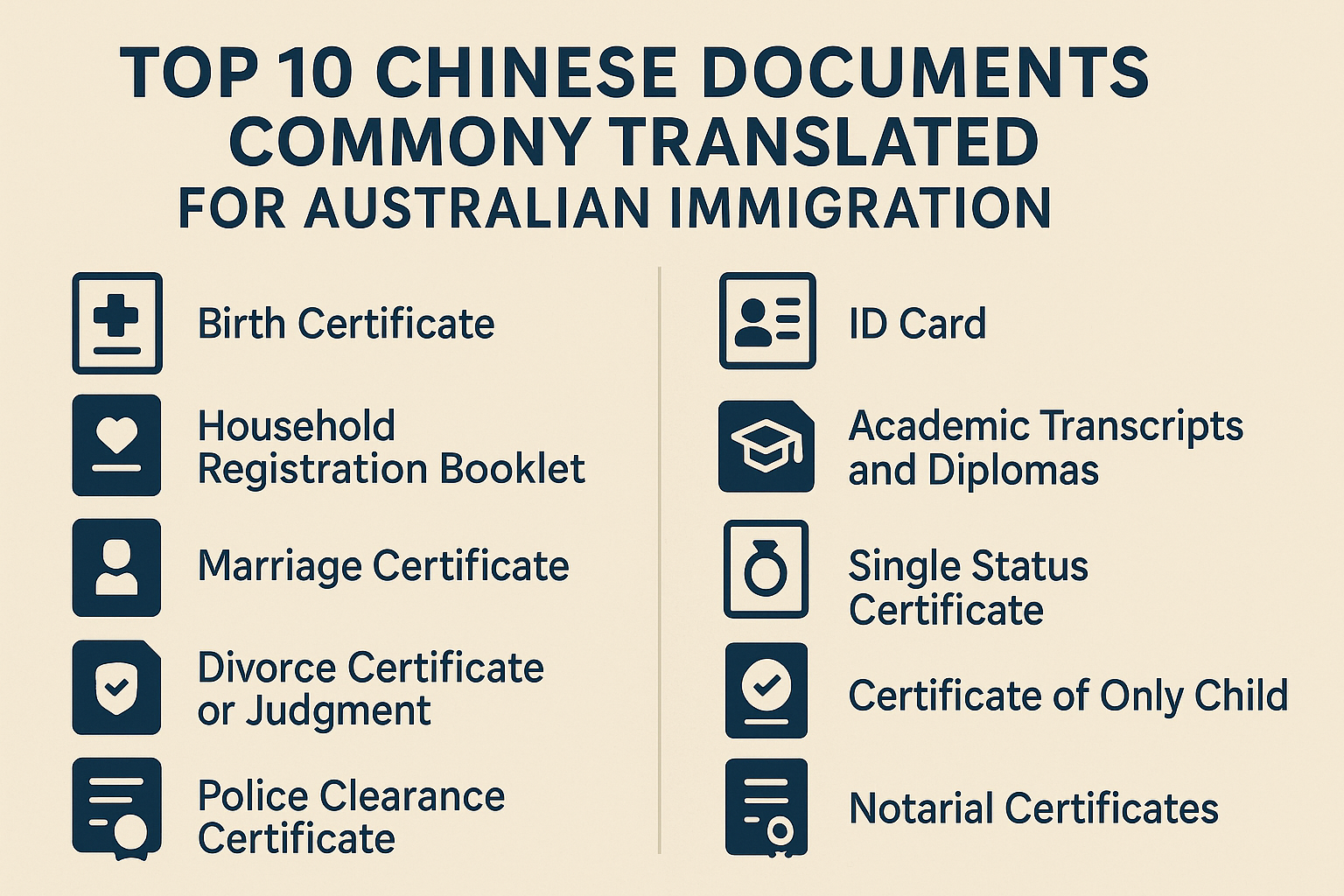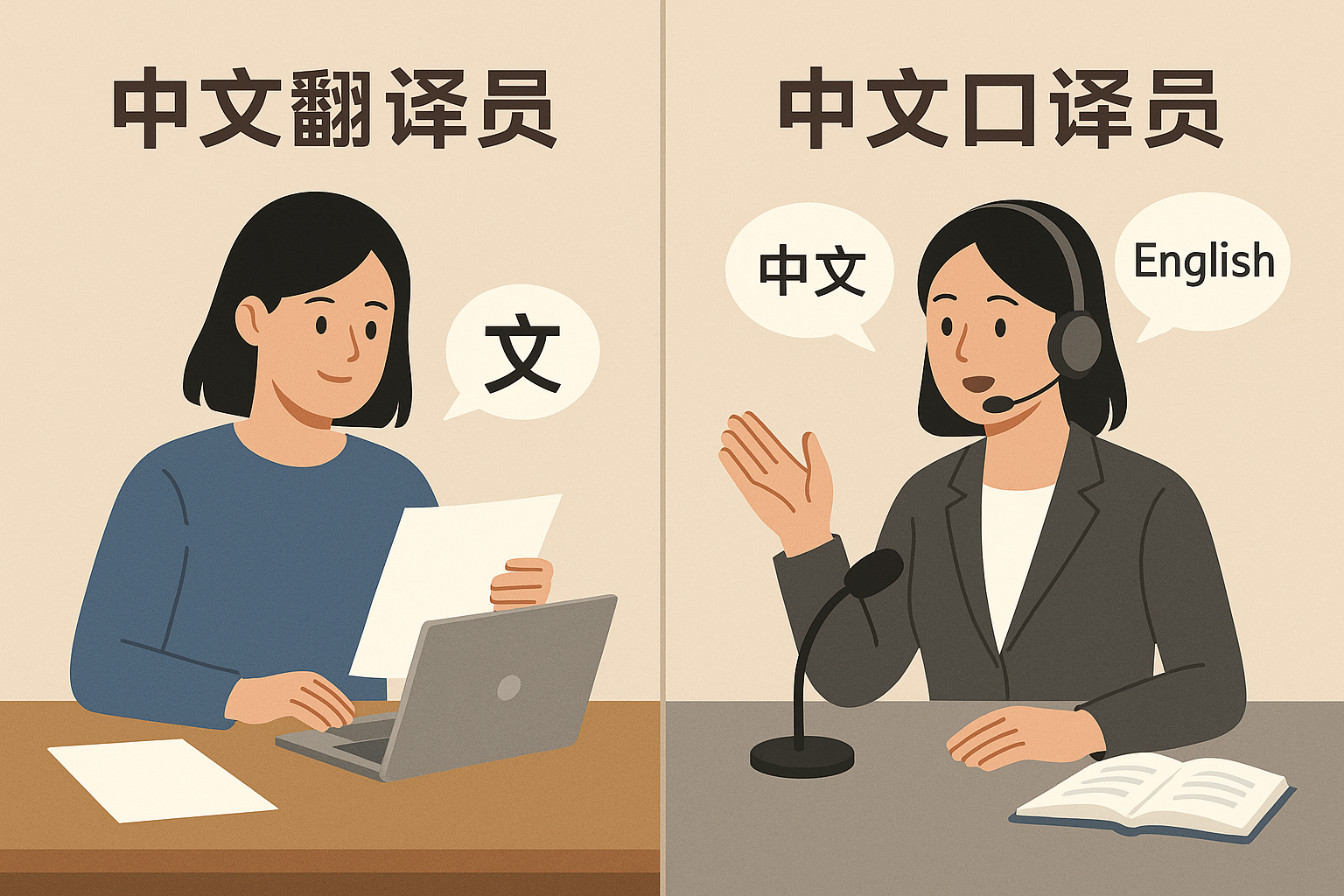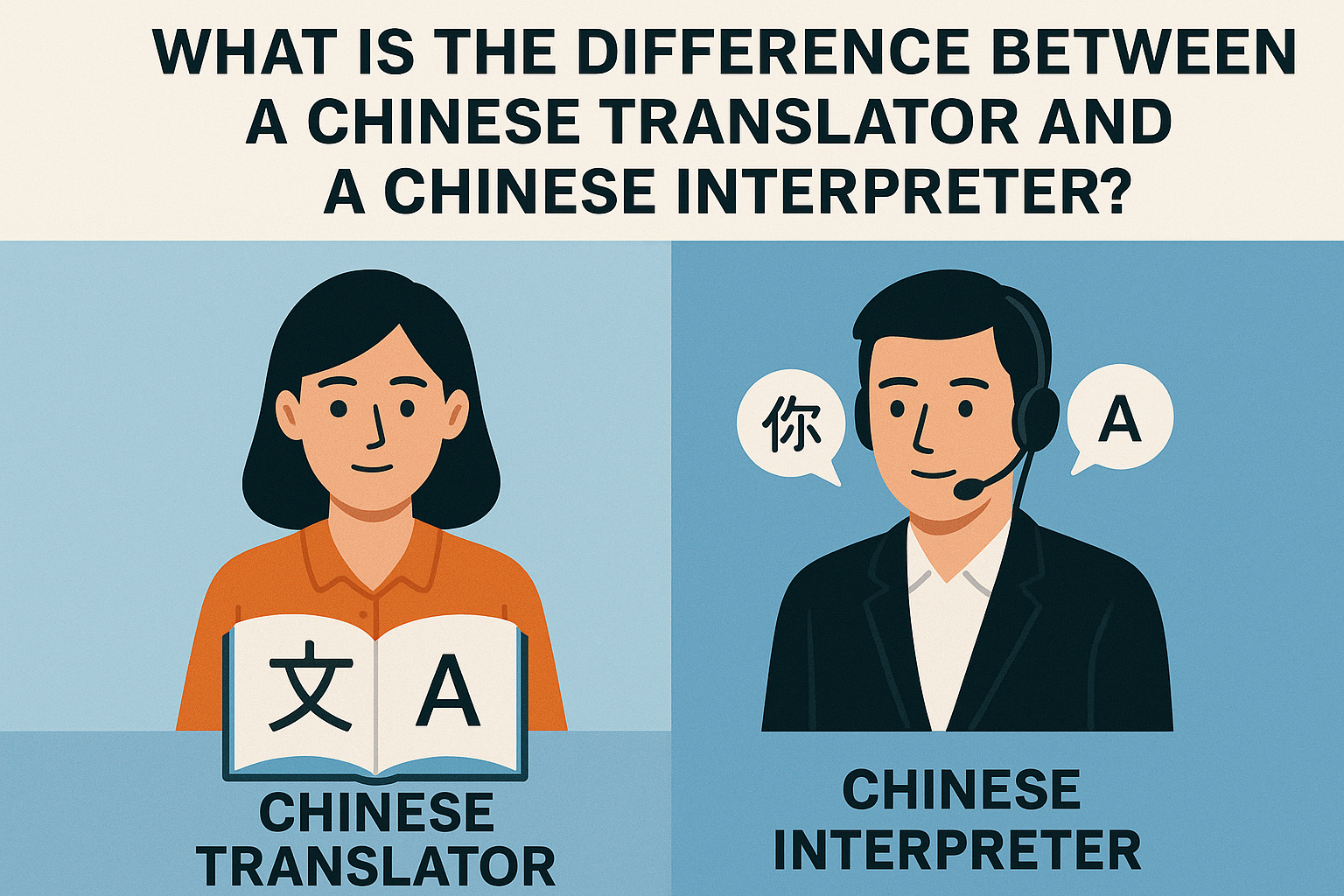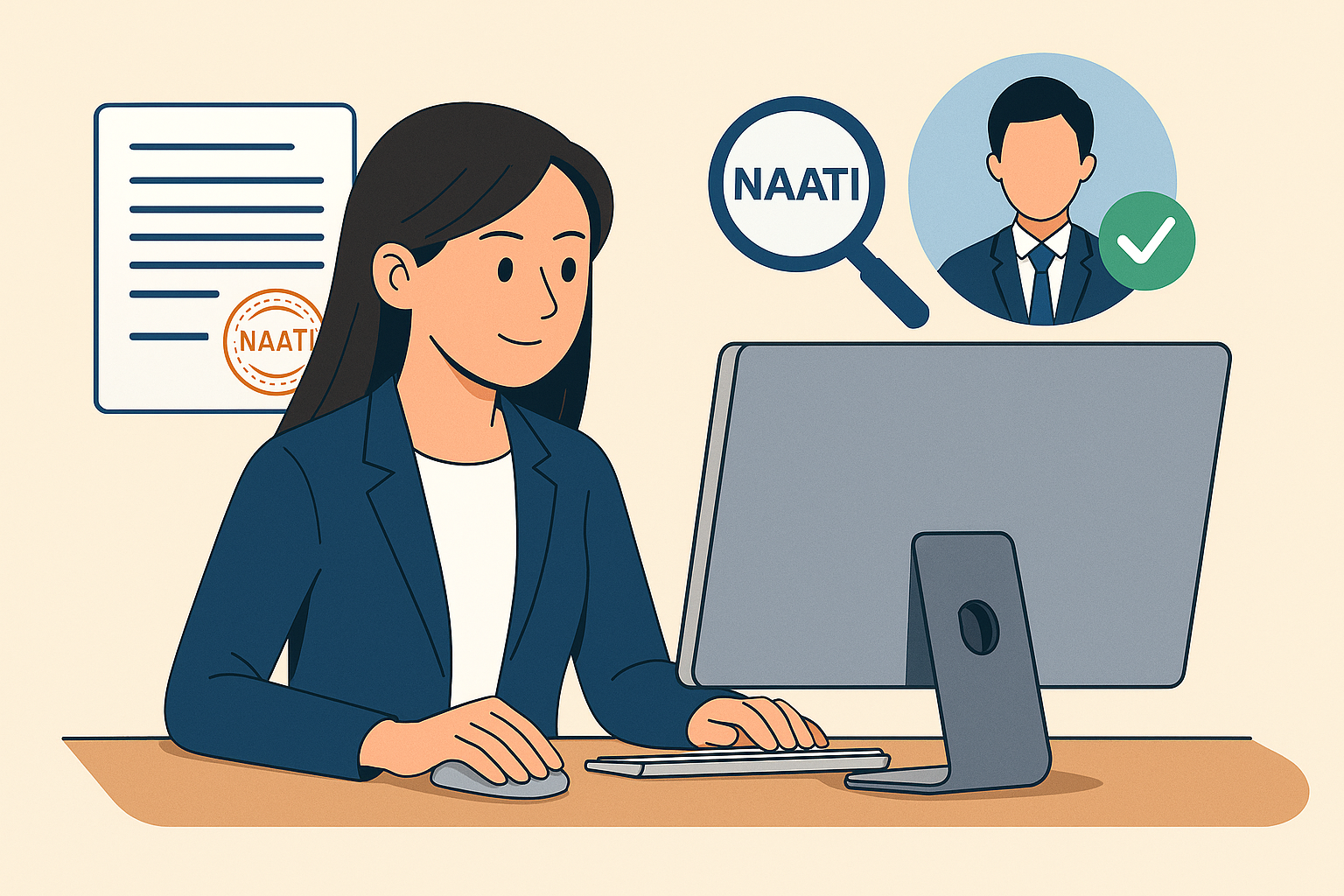NAATI · 03 June 2025
NAATI-certified translations do not expire. What matters is that the translator was certified at the time of completion. Physical stamps may show the translator’s certification expiry date, but newer digital stamps only display the generation date. To check certification status, use the NAATI website or scan the QR code on digital translations. Always check with the requesting institution if in doubt.
Translation · 29 May 2025
Need Chinese documents translated for your Australian visa? Here are the 10 most commonly requested: birth certificate, hukou, marriage/divorce certificates, police clearance, ID card, academic transcripts, single status, only-child certificate, and notarial documents. Lingofish provides fast, NAATI-certified translations.
Translation · 22 May 2025
翻译员处理书面中文文件,口译员则在现场进行口头语言传译。二者所用技能、工具及工作场景各异。前者注重准确表达与书面语风格,后者注重实时反应与口语沟通能力。了解区别,才能选择最合适的语言服务。
Translation · 22 May 2025
Chinese translators work with written texts, ensuring accurate translations of documents. Interpreters handle spoken language in real time, such as during meetings or court sessions. Both require high fluency, but the skills, tools, and settings they work in are very different.
NAATI · 17 May 2025
我在上海外国语大学学习英语文学,开启了对翻译的热情。之后来到澳洲,攻读西悉尼大学的翻译与口译硕士课程,并通过必修课“Accreditation”(NAATI认证课)的期末考试,顺利取得英译中、中译英及英⇄普通话口译三项NAATI认证。如今,我已成为NAATI认证翻译员,提供专业、可靠的语言服务。
NAATI · 17 May 2025
I began my translation journey at Shanghai International Studies University, then pursued a Master's at the University of Western Sydney. There, I passed NAATI exams in English→Chinese, Chinese→English, and interpreting. Now NAATI-certified, I provide professional, reliable translation and interpreting services across Australia.
Interpreting · 14 May 2025
在澳洲出庭或看医生时,如需中文翻译,请务必预约NAATI认证口译员。提前准备身份证、相关文件,说话简洁清楚,避免与翻译私聊。有疑问要主动询问。专业人士应提前预约、直接对客户讲话,并适当停顿。切勿使用未受训亲友翻译,以免造成误解或法律问题。专业翻译能保障你的权益与信息安全。
Interpreting · 14 May 2025
Attending court or a medical appointment with a Chinese interpreter? Work with a NAATI-certified professional. Bring key documents, speak in short sentences, and be clear. Professionals should speak directly to the client, avoid jargon, and allow pauses for interpretation. Don’t rely on untrained bilingual staff—accurate interpretation protects your rights and safety.
NAATI · 11 May 2025
在澳洲办理移民、上学或法院文件时,翻译必须由NAATI认证翻译员完成。请索取NAATI编号,并在naati.com.au核实其认证信息。如通过翻译公司获取文件,请在NAATI在线目录中搜索翻译员姓名并联系对方确认是否由其本人翻译,以确保文件真实有效,避免造成延误和额外费用。
NAATI · 11 May 2025
Need a NAATI-certified translation for immigration, court, or study in Australia? Always verify your translator. Ask for their NAATI ID, check their credentials on naati.com.au, and confirm details match the translation. If you used an agency, search the translator’s name in the Online Directory and contact them directly to confirm authorship. This ensures your document is valid and avoids costly delays.










